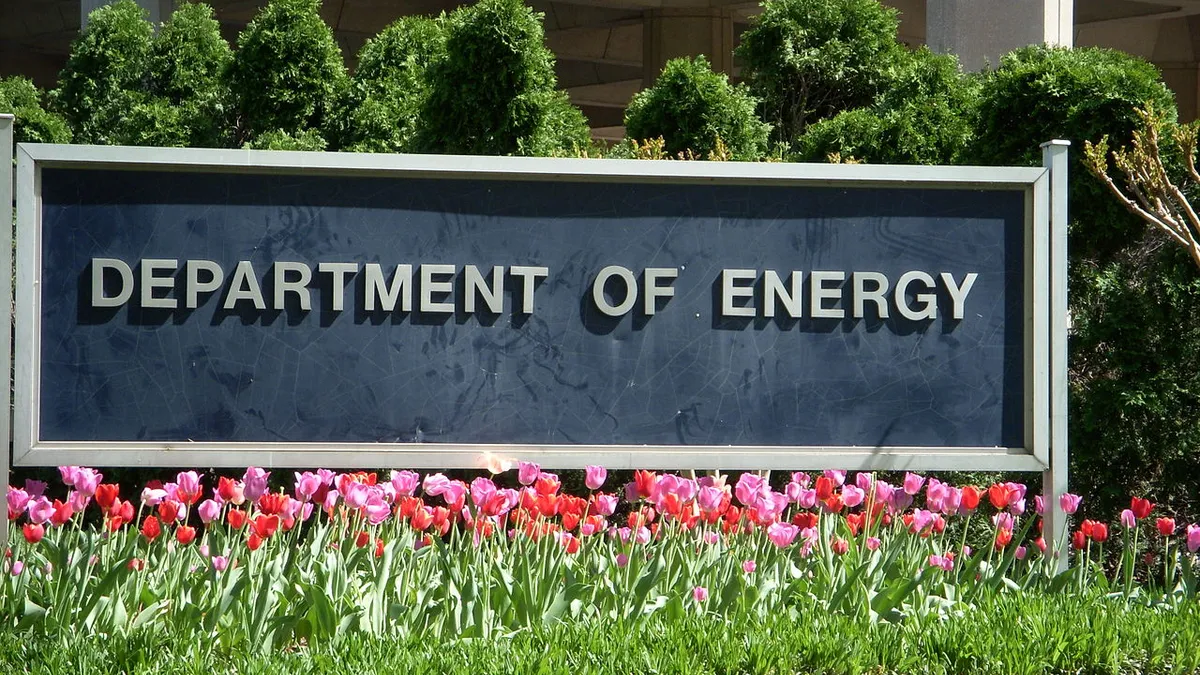Dive Brief:
- Regulators in 21 states will receive up to two years of technical assistance from the national laboratories on a range of grid modernization and energy transition issues, the U.S. Department of Energy (DOE) announced on Wednesday. Participating states were chosen through an application process that began in August.
- Projects and modeling will focus on "critical emerging and existing topics, including equity and justice, distributed energy adoption and integration, grid planning, and energy resilience," DOE said.
- The State Technical Assistance to Public Utility Commissions program is one of a few initiatives announced this month by DOE's Office of Energy Efficiency & Renewable Energy (EERE). The agency is also directing $18 million to help state, local and tribal governments improve the residential Weatherization Assistance Program.
Dive Insight:
The energy sector is changing rapidly and DOE's state assistance program aims to help regulators better understand new technologies, planning approaches and outcomes.
"Public utility commissions are at the front lines of our energy transition," EERE Principal Deputy Assistant Secretary Kelly Speakes-Backman, said in a statement. "Rapid technological advancements and clean energy goals present changes to the status quo — but also great opportunities for consumers."
National laboratories involved in the program include Lawrence Berkeley National Laboratory, Pacific Northwest National Laboratory, the National Renewable Energy Laboratory, Argonne National Laboratory and Oak Ridge National Laboratory.
The assistance program is supported through DOE's Grid Modernization Initiative and "can help to make the grid more reliable, face climate change, and increase equity," Speakes-Backman said.
DOE selected public utility commissions from these states to receive assistance from the national labs: Arkansas, California, Hawaii, Iowa, Indiana, Kentucky, Massachusetts, Maryland, Maine, Michigan, Minnesota, Missouri, North Carolina, New Jersey, New Mexico, Oregon, Rhode Island, South Carolina, Utah, Washington and Wisconsin.
Assistance topics include distributed energy resource adoption and integration, equity and justice, resilience, grid planning and regulation. Technical assistance to regulatory commissions will extend 1-2 years and DOE anticipates specific projects will be completed within 18 months.
EERE's Weatherization Assistance Program is also getting a boost, DOE said on Dec. 15. The program will provide $18.6 million this year, followed by $25 million annually through 2025, to assist local governments in enhancing weatherization efforts to lower energy costs for consumers.
The funds could go towards home energy upgrades including heat pumps, efficiency lighting and insulation.
"Thanks to the investments in the Bipartisan Infrastructure Law, DOE will be able to help even more communities, cut more air pollution, and generate good-paying local jobs," Secretary of Energy Jennifer Granholm said in a statement.
And on Dec. 13, EERE announced $54 million in "seed funding" for small businesses exploring technologies "that equitably accelerate the national transition to a clean energy economy."
According to DOE, businesses can apply for up to $250,000 through the agency's Small Business Innovation Research and Small Business Technology Transfer programs. Businesses can also "become eligible for up to $1.6 million in follow-on funding," the agency said.
"Small businesses are critical players in our innovation ecosystem, and we must enable their contributions toward tackling the climate crisis, deploying next-generation clean energy technologies, and leading the research breakthroughs," Under Secretary for Science and Energy Geraldine Richmond said in a statement.














